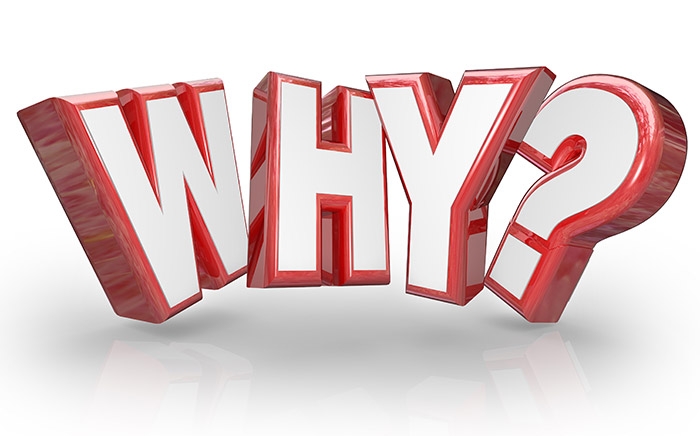Understanding Key Political Ideologies: Liberalism, Realism, Progressivism, Moderates, and More
Introduction
Political ideologies influence how societies are governed, how policies are shaped, and how citizens interact with each other and the state. Understanding the distinctions between liberalism , realism , progressivism , independence , the right , moderation , and terms like purple politics can empower individuals to make informed decisions and engage in meaningful civic discourse. This comprehensive guide explores these concepts, provides practical examples, and offers actionable steps for identifying and engaging with each stance, both offline and on platforms such as Bumble.
What Is Liberalism in Politics?
Liberalism is a political ideology centered on individual freedoms, civil rights, democracy, and equality under the law. Liberals generally advocate for government policies that protect personal liberties and promote social welfare. Historically, liberal thought has evolved from classic liberalism-favoring limited government and free markets-to modern liberalism, which supports active government intervention to address social inequalities and provide public goods. Examples of liberal policies include support for universal healthcare, environmental regulation, and civil rights legislation. Individuals who identify as liberal often prioritize the protection of minority rights and the expansion of social programs. In practice, liberalism can be found in parties such as the U.S. Democratic Party and in many Western democracies. To become involved in liberal causes, you can search for organizations like the American Civil Liberties Union (ACLU) or look for local advocacy groups. Consider volunteering, attending events, or participating in community discussions to further liberal values. Challenges for liberals may include balancing individual freedom with collective responsibility and navigating opposition from more conservative or libertarian viewpoints. Alternative approaches include classical liberalism, which emphasizes minimal state intervention, or social liberalism, which endorses state action for social justice.
What Is Realism in Politics?
Political realism is a theory that asserts power is the central motivation in political relations, both domestically and internationally. Realists believe that politicians and states primarily seek to maximize their power and security, often at the expense of idealistic or ethical considerations. The theory is rooted in thinkers such as Machiavelli and Hans Morgenthau, who outlined core principles including the autonomy of politics, the primacy of self-interest, and the importance of power above moral ideals [1] , [2] , [3] . A real-world example is the formulation of foreign policy, where states often act based on strategic interests rather than ideological alignment or humanitarian concerns. For instance, alliances may shift based on geopolitical advantage rather than shared values. If you wish to study realism, consider reading Morgenthau’s “Politics Among Nations” or searching for courses in international relations. Challenges in realism include accusations of cynicism and the ethical dilemmas arising from prioritizing power over principles. Alternative approaches include idealism, which emphasizes moral values and international cooperation.
What Is Progressive in Politics?
Progressivism is an ideology focused on advocating for social reform, equity, and the advancement of rights and opportunities for marginalized groups. Progressives typically support policies such as expanded healthcare, climate action, criminal justice reform, and reducing economic inequality. The movement originated in the early 20th century with efforts to combat corruption and improve societal conditions through government action. Examples of progressive policies include the Green New Deal, paid family leave, and tuition-free college initiatives. You can engage with progressive organizations by searching for advocacy groups or following politicians who champion these causes, such as members of the Congressional Progressive Caucus. Progressive challenges often center on resistance from traditionalists and debates over the feasibility of sweeping reforms. Alternatives to progressivism include centrist or moderate approaches that advocate for incremental change, and conservative approaches that prioritize tradition and stability.
What Is Independent in Politics?
An independent in politics refers to an individual or politician who does not align with any major political party. Independents may hold a mix of policy positions and often prioritize issue-based voting over party loyalty. In the U.S., notable independents include Bernie Sanders (who caucuses with Democrats but identifies as independent). To identify as or vote independent, you can register with no party affiliation in most states, or simply consider each candidate and policy on their individual merits. Engage in civic organizations that encourage non-partisan participation or attend town halls. Challenges for independents include limited access to ballot lines and reduced influence in party-dominated systems. Alternative approaches include joining minor parties that better align with your views, such as the Libertarian or Green Parties.

Source: inmobarbanza.com
What Is the Right in Politics?
The right in politics generally refers to conservative ideologies that emphasize tradition, limited government, free-market economics, and individual responsibility. Right-wing politics may include support for lower taxes, deregulation, strong national defense, and policies that prioritize cultural or religious values. In practice, right-leaning parties include the U.S. Republican Party and various conservative parties around the world. You can participate in right-wing politics by joining local party chapters, attending events, or engaging with conservative think tanks. Challenges for the right include criticism over social inequality and debates about the balance between personal freedom and social order. Alternatives to the right include centrist or progressive viewpoints that advocate for expanded government intervention or social reform.
What Is a Moderate in Politics?
A moderate is someone who holds centrist views, favoring practical compromise over ideological extremes. Moderates often blend ideas from both the left and right, seeking balanced solutions that are pragmatic and widely acceptable. Moderation is valued for its ability to foster bipartisan cooperation and reduce polarization. Examples include politicians who support market solutions with social safeguards or who advocate for incremental policy changes. To identify or engage as a moderate, you can participate in bipartisan organizations, watch for cross-party initiatives, or support candidates known for compromise. Challenges for moderates include criticism for perceived lack of conviction and difficulty gaining support in polarized environments. Alternatives include aligning with more defined liberal or conservative platforms.
What Does Moderate Politics Mean on Bumble?
On dating platforms like Bumble, users can identify their political preference as “moderate.” This typically signals openness to diverse viewpoints and a preference for centrist or pragmatic solutions, rather than strict adherence to left or right ideologies. If you see someone labeled as moderate, expect a balanced approach to political discussions and consider engaging in respectful, open-minded dialogue. You can update your political preferences in your Bumble profile settings. If you want to connect with others who share moderate views, use the app’s search and filter features to find compatible matches.

Source: medium.com
What Is Purple in Politics?
” Purple politics ” describes individuals, states, or regions that blend elements of both liberal (blue) and conservative (red) ideologies. Purple can refer to swing states in U.S. elections or people who hold a mix of left and right policy preferences. This term highlights the complexity beyond binary political labels. Examples include states like Pennsylvania or Ohio, which can vote for either Democrats or Republicans in major elections, or individuals who support both social liberalism and fiscal conservatism. To engage with purple politics, participate in local forums, seek out bipartisan initiatives, and remain open to diverse perspectives. Purple communities value discussion, compromise, and practical solutions. Challenges include navigating polarized discourse and finding common ground on contentious issues. Alternatives to purple politics include identifying as strictly liberal, conservative, or independent.
Accessing Political Resources and Opportunities
To become involved with any political ideology, consider the following steps:
- Search for official organizations or advocacy groups using reputable sources like government websites, academic institutions, or major news outlets.
- Attend local town halls, debates, or community meetings to hear diverse perspectives.
- Volunteer for campaigns or causes that align with your values.
- Stay informed by reading multiple sources and following current events through recognized media outlets.
- Use official platforms for voter registration, such as your state’s Board of Elections website.
If you are looking for specific programs or opportunities, such as political internships or educational resources, consider contacting local universities, civic organizations, or searching for “political advocacy groups” in your area. For dating platform political settings, consult the Bumble help center or profile settings for official guidance.



